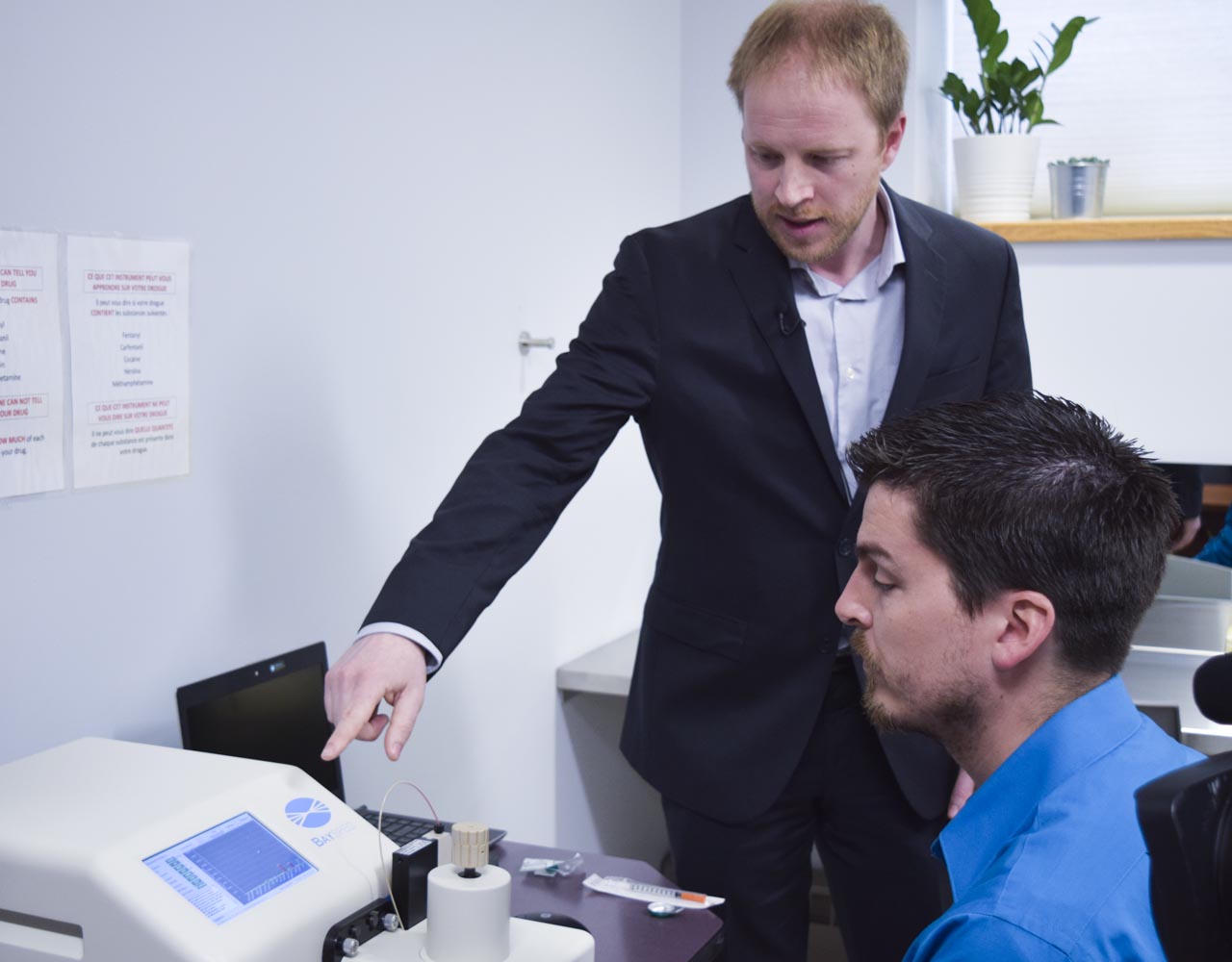Researchers from Carleton University and the University of Ottawa (U of O) recently unveiled a “state-of-the-art” instrument that can detect fentanyl and other harmful substances.
The “portable mass spectrometer” cost about US $130,000, and arrived at the Sandy Hill Community Health Centre (SHCHC) on May 3. The instrument will be used at the SHCHC’s safe injection site.
The device’s arrival at SHCHC was a result of a three-year collaborative project between experts from Carleton, U of O, and the SHCHC. The project aimed to fight the growing opioid and fentanyl crisis that has touched Ottawa in recent years.
Before the spectrometer was introduced, the SHCHC would have to send a client’s needle to Health Canada’s drug analysis laboratory to find out what was in it. This process would take months.
The device breaks down chemicals in a drug sample by weighing the mass of its molecules in 20 seconds.
“If we had a hundred people in a room and we knew very accurately everybody’s mass, you wouldn’t have to look at their ID or their face. You could put them on a scale and you’d identify who they are,” Jeffrey Smith, the director of the Carleton mass spectrometry centre, said. “In the same way, this machine allows you to dip a small metal stick into the sample and within 20 seconds of putting it into the port of the instrument, you have an idea of what’s actually present in the sample.”
According to Lynne Leonard, a U of O epidemiology professor and one of the leading researchers in the project, the instrument is a necessary technology.
The rising demand for illicit opioids has resulted in a regular practice of lacing these drugs with substances such as fentanyl. This means that more people are using “unregulated drugs of unknown content, quality, and effect,” she said.
“These unknown drugs are driving the unacceptable levels of overdose-related deaths and non-fatal overdose events occurring amongst citizens of Ottawa,” Leonard added.
The city had 48 deaths from unintentional drug overdoses in 2015, according to the latest data from Ottawa Public Health. Twenty-nine of these deaths by overdose were due to opioids, with about half of those caused by fentanyl specifically.
But, at the SHCHC’s safe injection site, Rob Boyd, director of harm reduction services at SHCHC, said the portable mass spectrometer drug test won’t be mandatory for drug users who use the injection site.
“People can be reluctant to give up a sample of their product—even with very, very tiny amounts that we’ll take,” Boyd said.
Users will be asked for permission before the test, he said. If they agree and fentanyl is detected, it will be up to them to decide whether they want to go ahead and consume the drugs, he added.
Despite the voluntary nature of the testing, Boyd urged people to get informed on what’s in their drugs, noting an increase in illicit drug use in Ottawa over the last year.
“We think it’s absolutely critical to give people an opportunity to understand what’s in the drugs they’ve purchased,” he said.
Photo by Temur Durrani






